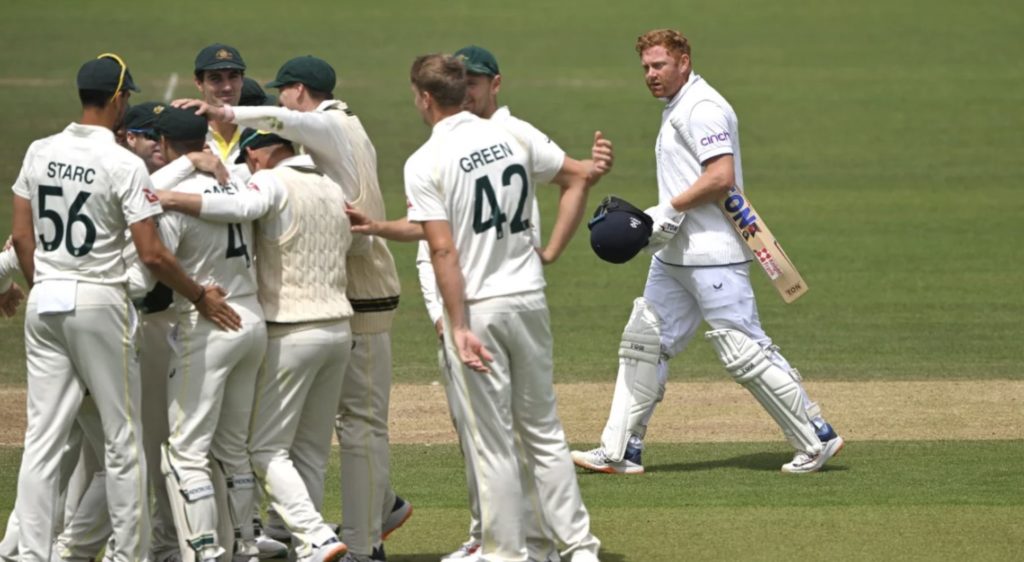Jonny Bairstow was stumped during the final day of the second Ashes Test at Lord’s after mistakenly thinking the ball was dead.
READ: Bairstow dismissal sends Lord’s into revolt
🤐🤐🤐#EnglandCricket | #Ashes pic.twitter.com/dDGCnj4qNm
— England Cricket (@englandcricket) July 2, 2023
Dead ball laws:
20.1 Ball is dead
20.1.1 The ball becomes dead when
20.1.1.1 it is finally settled in the hands of the wicketkeeper or of the bowler.
20.1.1.2 a boundary is scored. See Law 19.7 (Runs scored from boundaries).
20.1.1.3 a batter is dismissed. The ball will be deemed to be dead from the instant of the incident causing the dismissal.
20.1.1.4 whether played or not it becomes trapped between the bat and person of a batter or between items of his/her clothing or equipment.
20.1.1.5 whether played or not it lodges in the clothing or equipment of a batter or the clothing of an umpire.
20.1.1.6 under either of Laws 24.4 (Player returning without permission) or 28.2 (Fielding the ball) there is an offence resulting in an award of Penalty runs. The ball shall not count as one of the over.
20.1.1.7 there is contravention of Law 28.3 (Protective helmets belonging to the fielding side).
20.1.1.8 the match is concluded in any of the ways stated in Law 12.9 (Conclusion of match).
20.1.2 The ball shall be considered to be dead when it is clear to the bowler’s end umpire that the fielding side and both batters at the wicket have ceased to regard it as in play.
20.2 Ball finally settled
Whether the ball is finally settled or not is a matter for the umpire alone to decide.







